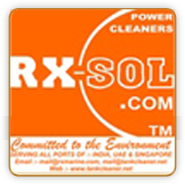Anti microbial ability on FOOD
Chemical disinfectants and antiseptics quantitative suspension test for the evaluation of bactericidal activity of chemical disinfectants and antiseptics used in food,industrial, domestic, and institutional areas —Test method and requirements (phase 2, step 1).
Organism: Killing Time:
Enterococcus hirae 30 sec
Escherichia coli 5 sec
Klebsiella pneumoniae 5 sec
Staphylococcus aureus 5 sec
Pseudomonas aeruginosa 5 sec
Acinetobacter Baumannii 15 sec
Campylobacter jejuni 15 sec
Salmonella typhimurium 15 min
Listeria monocytogenes 10 min
MRSA 10 sec
Anti microbial ability on Non Porous Surface
Chemical disinfectants and antiseptics quantitative non-porous surface test for the evaluation of bactericidal and/or fungicidal activity of chemical disinfectants used in food, industrial,domestic and institutional areas Test method and requirements without
mechanical action (phase 2/step 2).
Organism : Killing Time:
Enterococcus hirae 30 sec
Listeria monocytogenes 10 min
EMRSA 5 sec
MRSA 5 sec
Pseudomonas aeruginosa 5 sec
Salmonella typhimurium 15 min
Staphylococcus aureus 5 sec
Escherichia coli 5 sec
Anti microbial ability on MEDICAL AREA
Suspension-based study formally used to evaluate bactericidal activity of products that are used in the medical area (e.g. hygienic hand rub, hygienic handwash, surgical hand rub, surgical handwash, instrument disinfection etc.).
Organism Killing Time:
Enterococcus hirae 30 sec
Listeria monocytogenes 10 min
MRSA 10 sec
Pseudomonas aeruginosa 5 sec
Salmonella typhimurium 30 sec
Staphylococcus aureus 5 sec
Anti microbial ability on Aqueous System :
Chemical disinfectants and antiseptics.quantitative suspension test for the evaluation of bactericidal activity against Legionella of chemical disinfectants for aqueous systems.
Test method and requirements (phase 2, step1).
Organism Killing Time:
Legionella pneumophila 30 sec
Legionella pneumophila 30 sec
Anti microbial ability on VETERINARY AREA :
Chemical disinfectants and antiseptics quantitative surface test for the evaluation of bactericidal activity of chemical disinfectants and antiseptics used in the veterinary area on non-porous surfaces without mechanical action. Test method and requirements (phase 2, step 2).
Organism Killing Time:
Proteus vulgaris 30 sec
Pseudomonas aeruginosa 5 sec
Staphylococcus aureus 5 sec
Enterococcus hirae 30 sec
Yeast, Mould & Fungi Efficacy
Anti microbial ability on FUNGUS SURFACE AREA
Chemical disinfectants and antiseptics — Quantitative suspension test for the evaluation of fungicidal activity of chemical disinfectants and antiseptics used in food, industrial, domestic, and institutional areas — Test method and requirements (phase 2, step 1).
Organism Killing Time:
Aspergillus fumigatus 5 sec
Aspergillus Niger 5 sec
Anti microbial ability on FUNGUS FOOD AREA
Chemical disinfectants and antiseptics — Quantitative non-porous surface test for the evaluation of bactericidal and/or fungicidal the activity of chemical disinfectants used in food, industrial, domestic and institutional areas — Test method and requirements without mechanical action (phase 2/step 2).
Organism Killing Time:
Candida Albicans 30 sec
Aspergillus Niger 5 sec
Virucidal Efficacy
Quantitative suspension test for virucidal activity (in vitro)
Suspension based study used as a presumptive test to evaluate virucidal activity.
Organism Killing Time:
Norovirus 5 min
Feline Calicivirus (FCV) 2 min
Chemical disinfectants and antiseptics. Quantitative suspension test for the evaluation of the virucidal activity of chemical disinfectants and antiseptics used in the veterinary area. Test method and requirements (Phase 2, step 1)
Organism Killing Time:
Koi Herpes Virus 10-15 min
ASTM E 1052
The ASTM E1052 method is performed to determine the virucidal efficacy of a biocide against a test virus in suspension. The method may be used to establish the initial efficacy of several disinfectant active concentrations at various selected contact times. It is also used to determine the anti-viral effectiveness of liquid hand soaps, over-the-counter (OTC) topicals, and other antiseptics designed for use on the skin. The test is conducted according to the standards and methods accepted by the US Environmental Protection Agency (EPA) and Food and Drug Administration (FDA) for registration of the product as a virucidal agent.
Organism Killing Time:
Bovine viral diarrhea virus 10-15 min
Feline Calicivirus (FCV) 1 min
Hepatitis C 10-15 min
Influenza A virus (H1N1) 10-15 min
SARS virus 10-15 min
HIV 1 10-15 min
Sporicidal Efficacy
EN 14347
Chemical disinfectants and antiseptics – Basic sporicidal activity – Test method and requirements (phase 1).
Organism Killing Time:
Bacillus cereus 5 min
Bacillus subtilis 5 min
EN 13697
Chemical disinfectants and antiseptics – Quantitative non-porous surface test for the evaluation of bactericidal and/or fungicidal activity of chemical disinfectants used in food, industrial,domestic and institutional areas – Test method and requirements without
mechanical action (phase 2, step 2).
Organism Killing Time:
Clostridium Difficile 1 min
Bacillus subtilis 5 min
EN 13704
Chemical disinfectants. Quantitative suspension test for the evaluation of sporicidal activity of chemical disinfectants used in food, industrial, domestic and institutional areas. Test method and requirements (phase 2, step 1).
Organism Killing Time:
Clostridium Difficile 1 min
Clostridium perfringes 1 min
Mycobacterium Efficacy
EN 14204
Chemical disinfectants and antiseptics. Quantitative suspension test for the evaluation of mycobactericidal activity of chemical disinfectants and antiseptics used in the veterinary area. Test method and requirements (phase 2, step 1).
Organism Killing Time:
Mycobacterium fortuitium 10 min
EN 14348
Chemical disinfectants and antiseptics - Quantitative suspension test for the evaluation of mycobactericidal activity of chemical disinfectants in the medical area including instrument disinfectants – Test method and requirements (phase 2, step 1).
Organism Killing Time:
Mycobacterium terrae 10 min
EN 14563
Chemical disinfectants and antiseptics - Quantitative carrier test for the evaluation of mycobactericidal or tuberculocidal activity of chemical disinfectants for instruments used in the medical area – Test method and requirements (phase 2, step 2).
Organism Killing Time:
Mycobacterium avium 10 min
Mycobacterium terrae 10 min
Mycobacterium fortuitium 10 min








